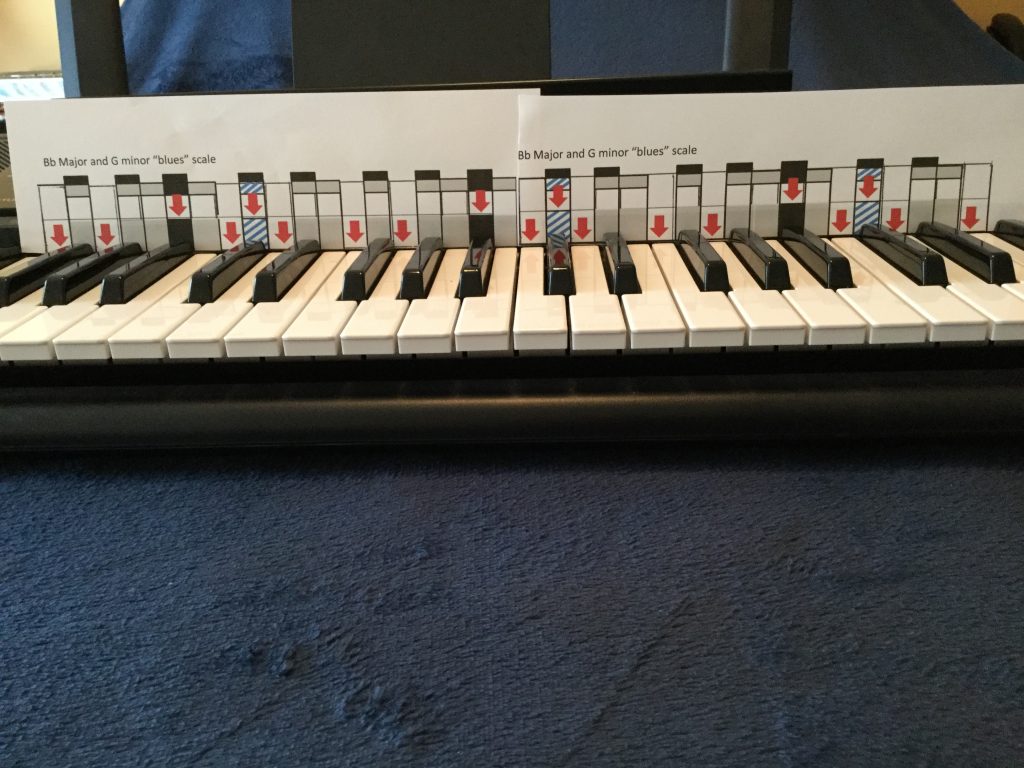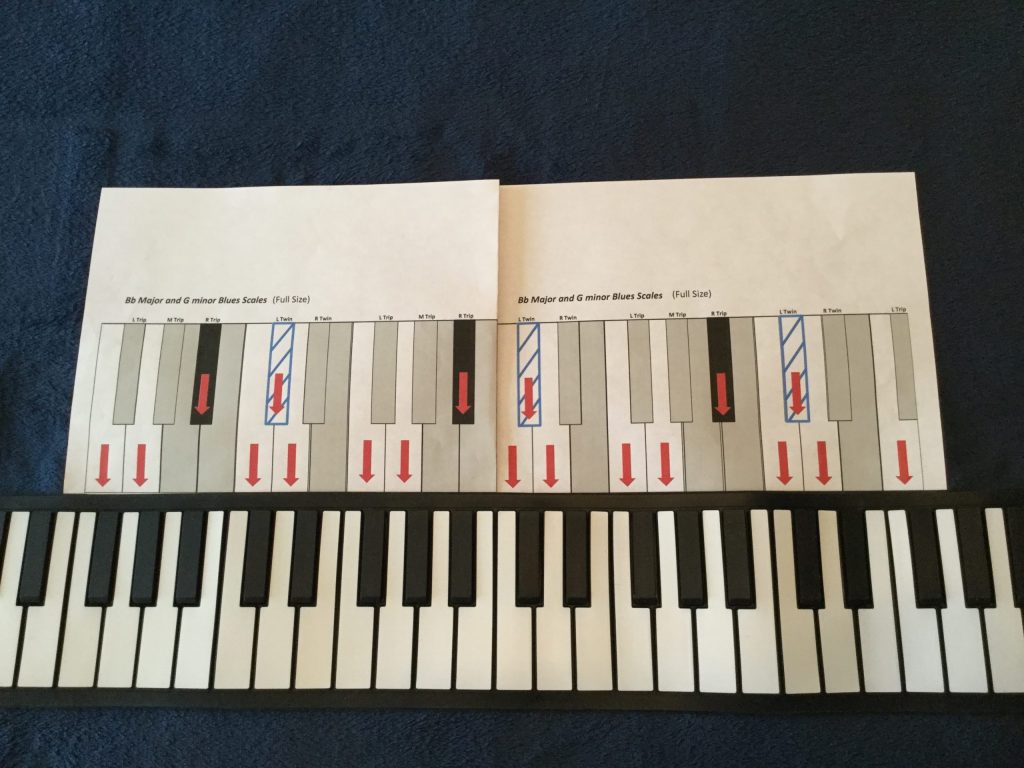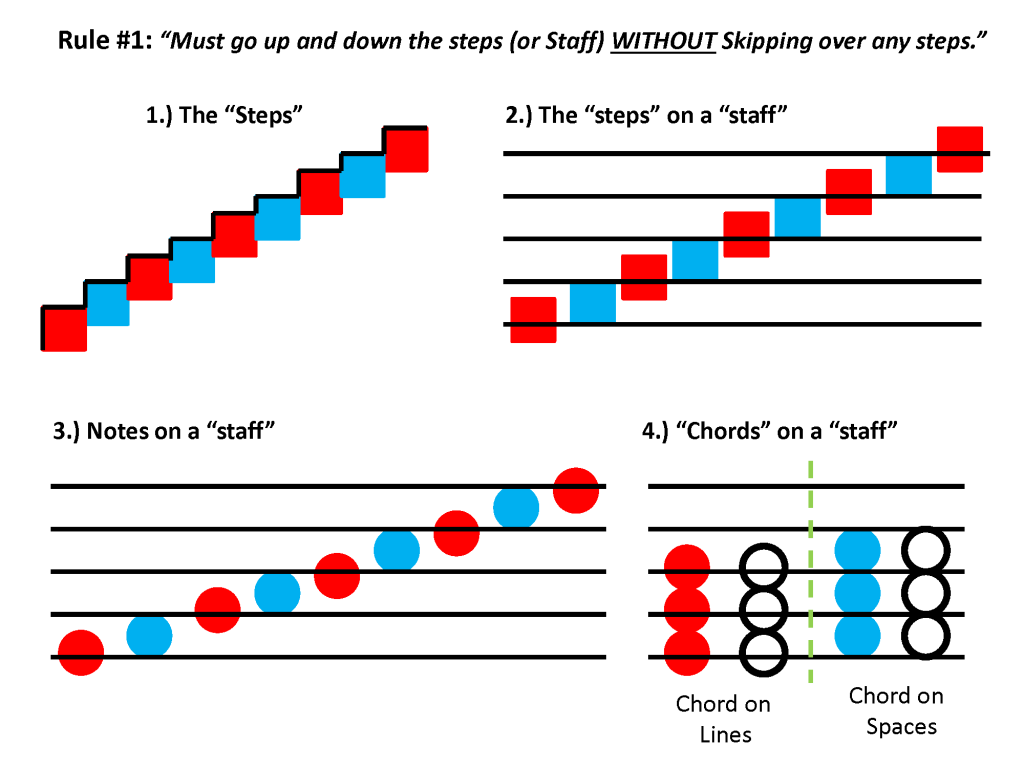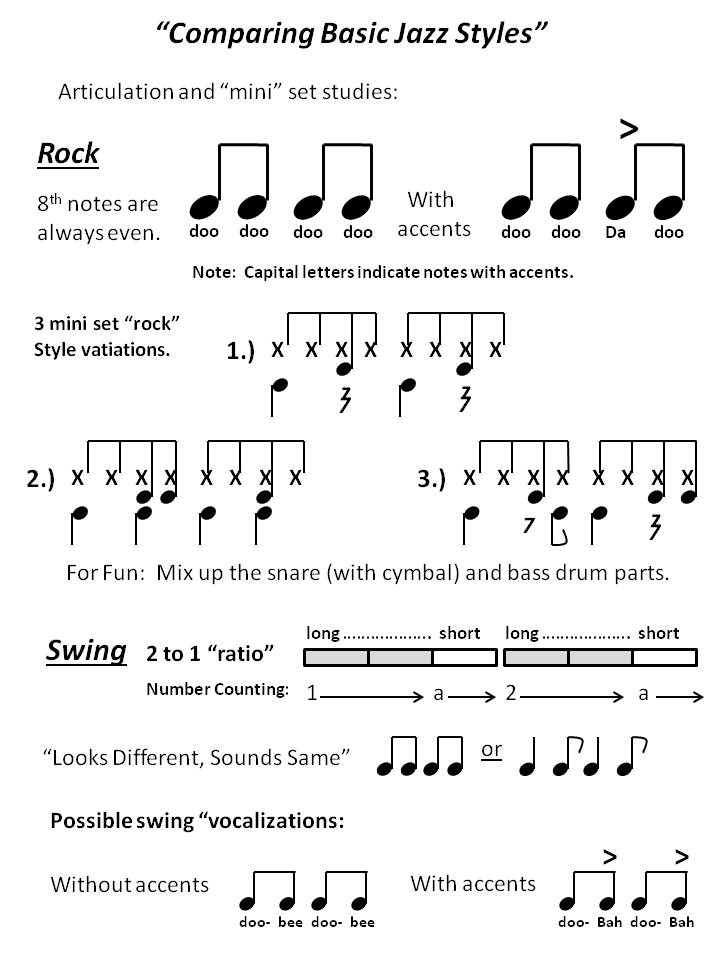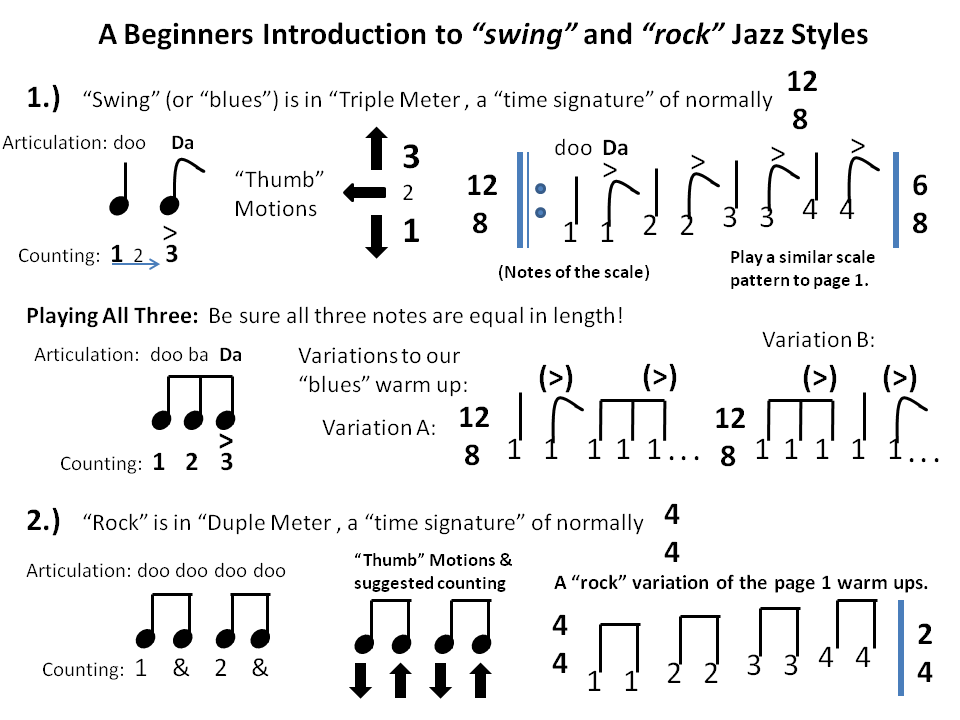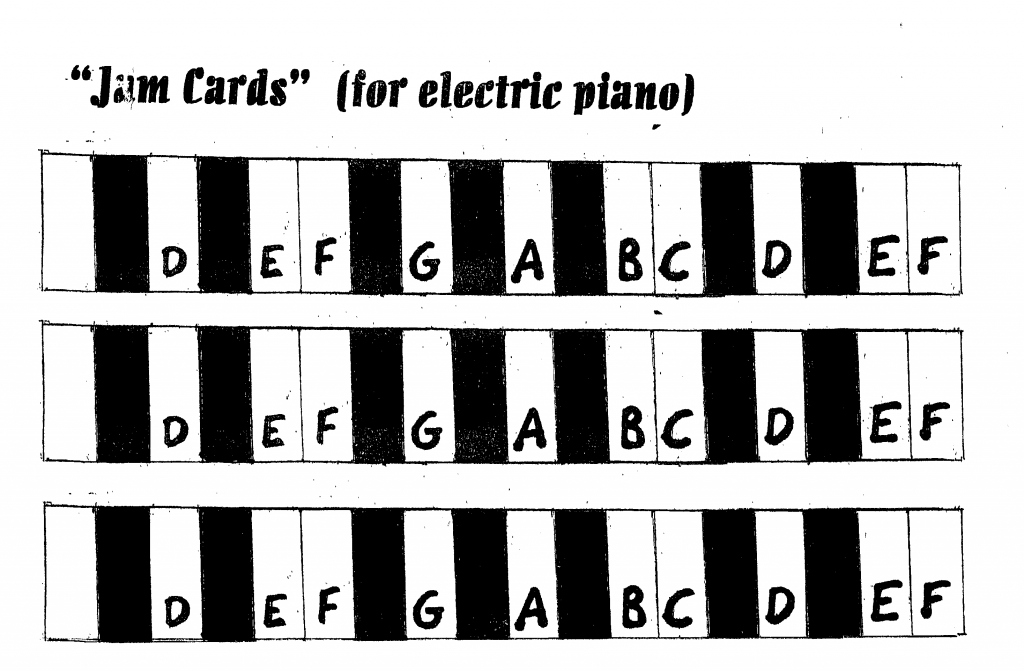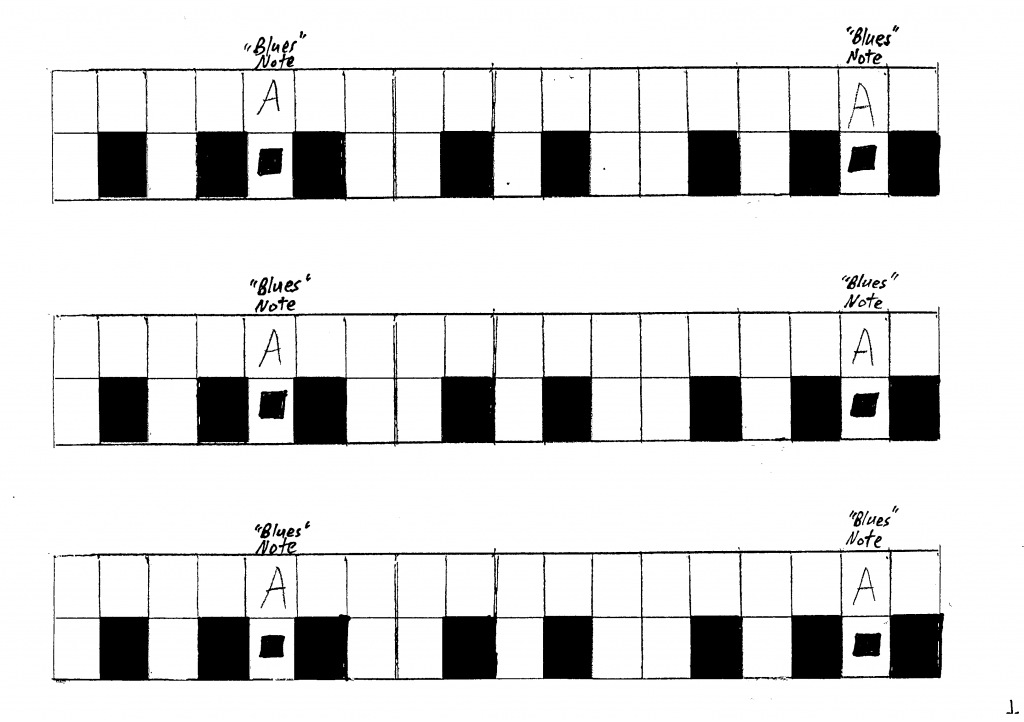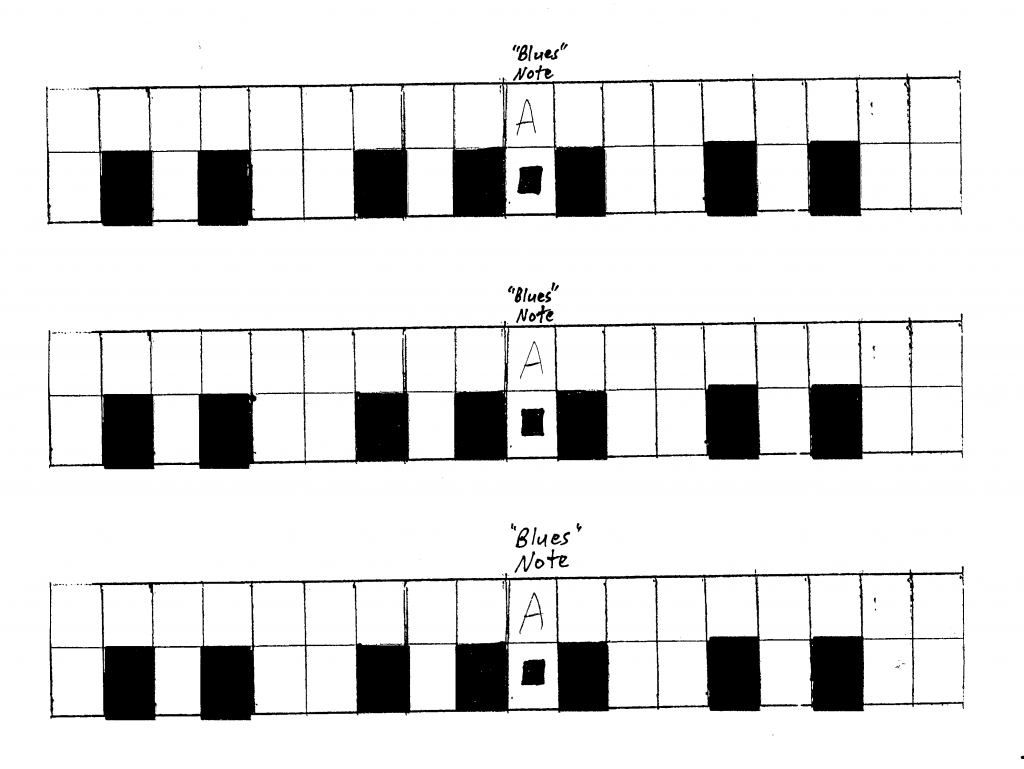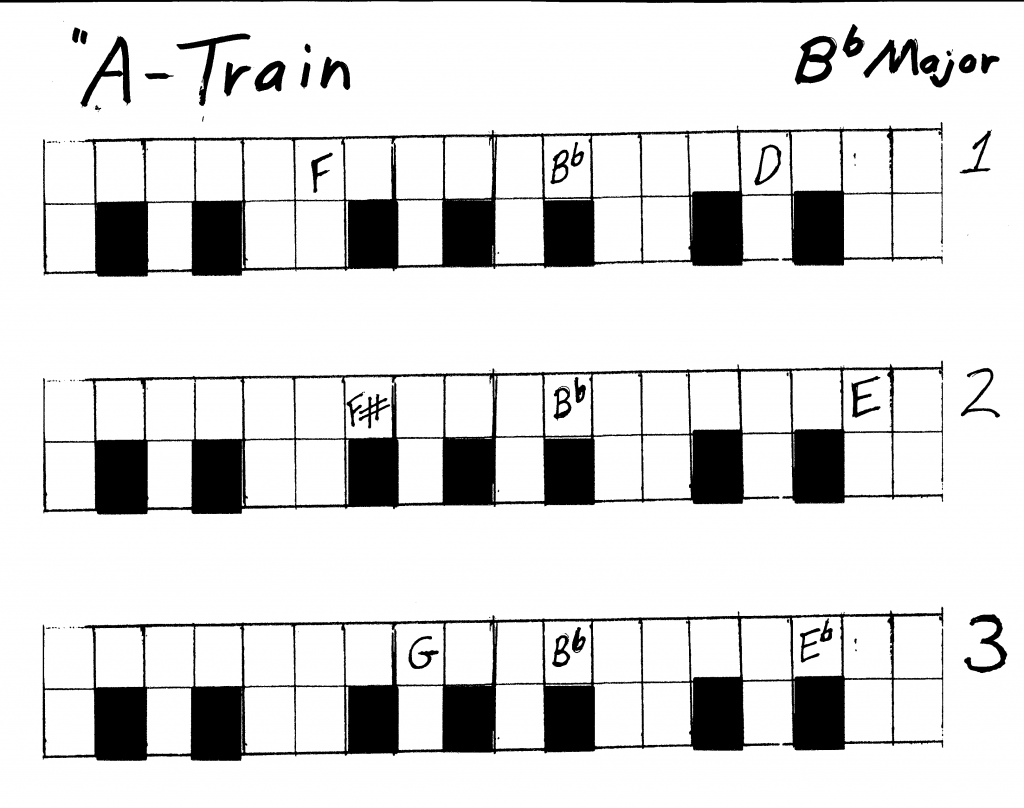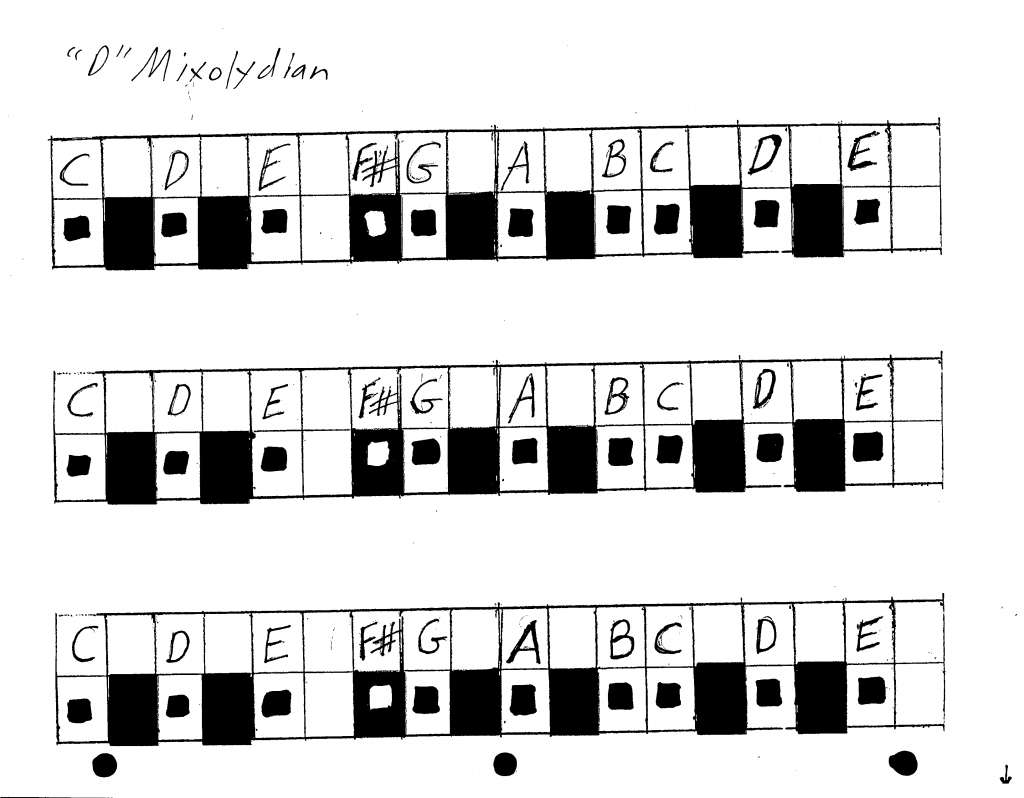"Transitional Keyboards" Part 2
“Garage Band” is the ultimate fusion of music with technology. Students can experience a more “in-depth” study into music and its fundamentals, along with the physics of sound and the basic workings of a modern recording studio. I am focusing my attention on the highly efficient and effective use of “Garage Band” to teach and enhance improvisation skills, at both the beginning and intermediate levels. Exploring different methods of notation and using “keyboard maps” that help allow students to “decode” and perform songs in music class. Finally, to arrange a wide variety of music that can be performed with an i-Pad or Keyboard Ensemble, and then eventually combine i-pads and keyboards into “multi-level” performing ensembles. Students could seamlessly progress from the beginning level on an i-pad to more advanced levels on the piano.
Many materials on this web site have minimal explanations. I find that teachers will use whatever they feel best suits their student’s needs. Many times they will come up with better ideas on ways to use them than the initial way that was intended. Since “Garage Band” for music education is covering “new ground”, I can see where you might become confused on the “How and Why” about certain materials. Feel free to contact me and I’ll be glad to share with you my thoughts and suggestions. If you do decide to try any of these ideas with your students, I would greatly appreciate your feedback.
Black and White Key Keyboard Audio Files:
Black Key: Eb minor blues (“A” blues note)
Bounce It
Higher Ground Stevie Wonder
Ninja Turtles Kalimba
White Key Improvisation: (“Eb” blues note)
BAGzilla A minor / minor blues All white keys & blues note
Blue Magic Wombat A minor blues / Danger Notes: “B” & “F”
Blues Rap A minor blues
CAGE Full O’ Blues A minor blues
Da, Da, Da, Da, Da, Bomp A minor blues / Danger Notes: “B” & “F”
Drop and Roll A minor blues / Danger Notes: “B” & “F”
Engagement C Major / All White Keys with blues note
Festival D Dorian (same as “C” Major) All White Keys No Black Keys
Galactic Swamp Dance A minor blues / Danger Notes: “B” & “F” NO Black Keys
I Don’t Do Drugs G Mixolydian (same as C Major) All White Keys NO Black Keys
Kindness (Ballad) C Major / All White Keys NO Black Keys
Leapin’ Lemurs A minor blues / Danger Notes: “B” & “F”
Orion’s Belt (Ballad) G Mixolydian (same as C Major) All White Keys NO Black Keys
Pay Day C Major Blues / Danger Notes: “B” & “F”
Rubber Baby Buggy Bumpers A minor blues / Danger Notes: “B” & “F”
Rubber Necking A minor blues / Danger Notes: “B” & “F”
Shark CAGE A minor blues / Danger Notes: “B” & “F”
Smooth (Santana) A minor / minor blues All white keys & blues note
Sounds All Around Us A minor blues / Danger Notes: “B” & “F”
Tidal Wave A minor blues / All White Keys with blues note
Viva Valentine A minor / minor blues All white keys & blues note
We Rock A minor blues / NO! Danger Notes
Whack Attack A minor blues / Danger Notes: “B” & “F”
Whomp Out Loud C Major / All White Keys NO Black Keys
WARNING! “Danger Notes”: Not all white keys work all the time.
K-8 Magazine Composite CD #1 (odd years)
K-8 Magazine Composite CD #2 (even years)
Master Improvisation MP3 Resource List:
Scale Patterns for Practice:
Steps, Skips, and Jumps 2:
"Click" on image below.
Blues Scale Step Sequence A:
Blues Scale Step Sequence B (Major and minor):
"Click" on image below.
A "Click" on image below.
i-Pad "Overlay" to Instrument Bb Major and G minor Blues Scale:
Full Size Keyboard to Instrument Bb Major and G minor Blues Scale:
Full Size Keyboard with Note Names Bb Major and G minor Blues Scale:
"D" is for Doggie with the Two Black Ears:
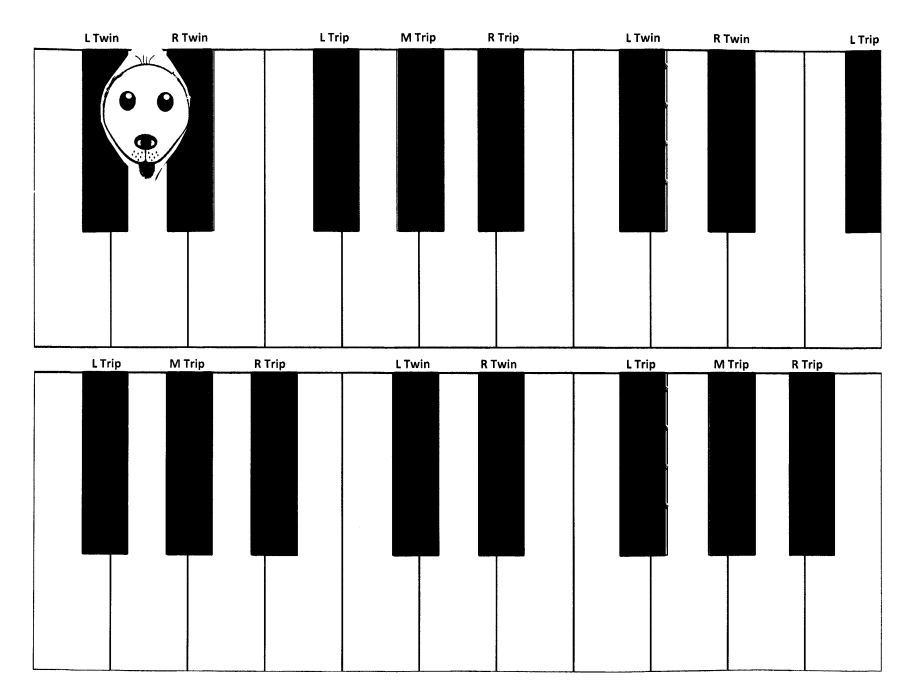
Full Size Black and White Key Masters with Note Names:
Black Key Improvisation with "blues note" (Black & White Map):
Black Key Improvisation with "blues note" (Color Coded Map):
White Key Improvisation with "blues note" (Color Coded Map):
Improvisation and Jazz Charts in Bb Major and G minor:
Full Size Keyboard Map Bb Major and G minor Blues Scale:
Full Size Keyboard Map Bb Major and G minor Blues Scale with Arrows:
Improvisation and Jazz Charts in C Major and A minor:
Full Size Keyboard Map C Major and A minor Blues Scale (Triplet Lead):
Full Size Keyboard Map C Major and A minor Blues Scale (Twin Lead):
Full Size Keyboard Map C Major and A minor Blues Scale with Arrows (Triplet Lead):
Full Size Keyboard Map C Major and A minor Blues Scale with Arrows (Twin Lead):
Improvisation and Jazz Charts in F Major and D minor:
Full Size Keyboard Map F Major and D minor Blues Scale (Triplet Lead):
Full Size Keyboard Map F Major and D minor Blues Scale (Twin Lead):
Full Size Keyboard Map F Major and D minor Blues Scale with Arrows (Triplet Lead):
Full Size Keyboard Map F Major and D minor Blues Scale with Arrows (Twin Lead):
Keyboard Masters "Triplet" Lead:
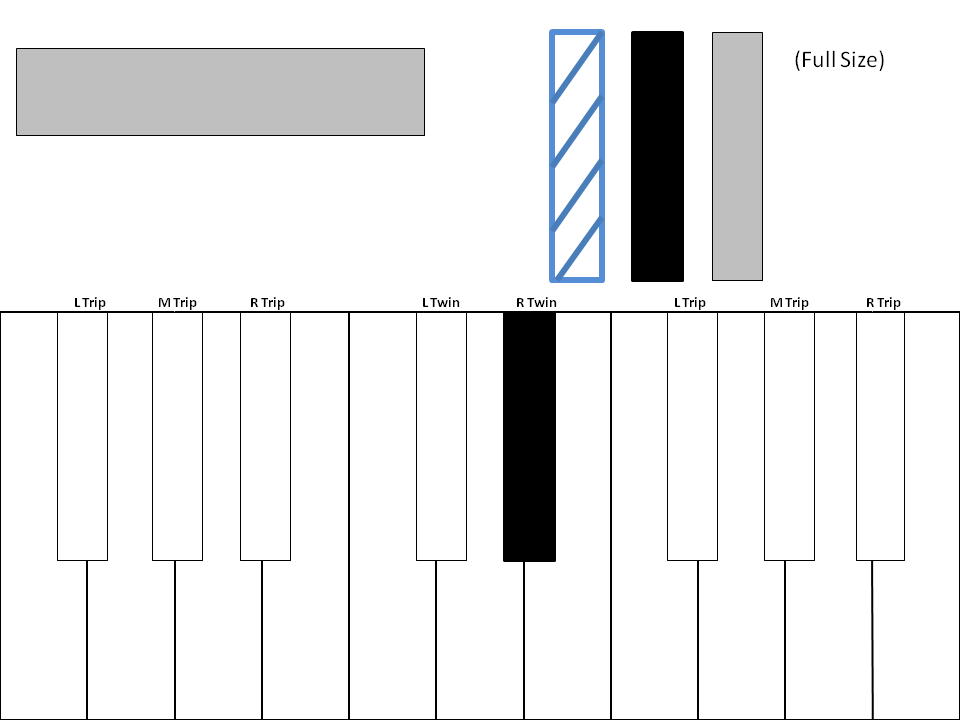
Keyboard Masters "Twin" Lead:
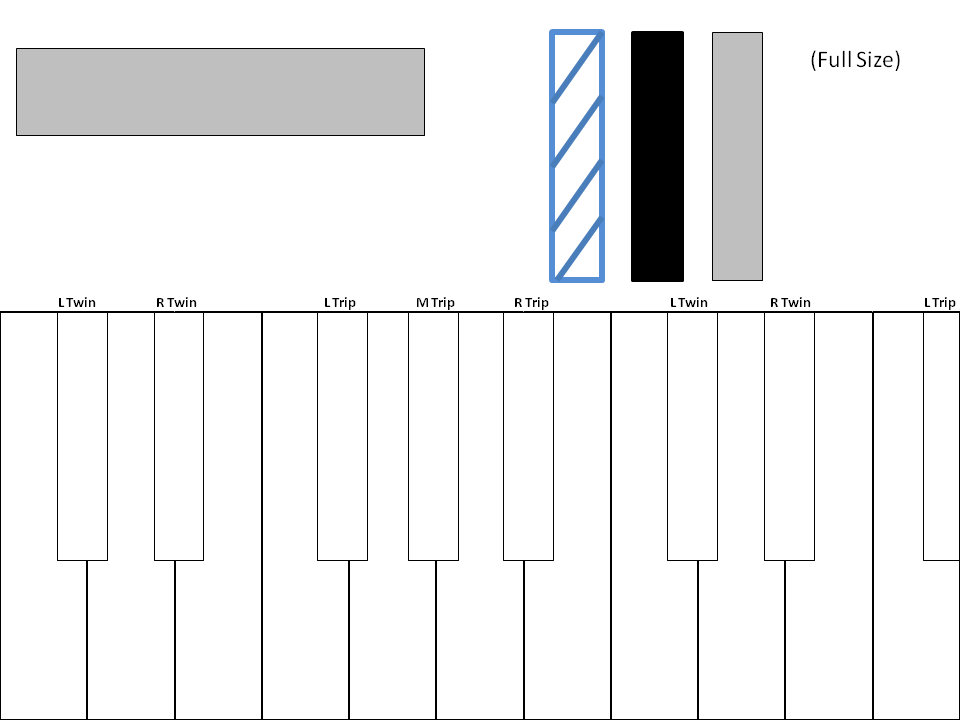
Little Kids Rock "Jam" Cards:
Jam Card "Triplet" Lead Blank:
Jam Card "Twin" Lead Blank:
All Black Key Blues Scale Improvisation "Triplet" Lead:
All Black Key Blues Scale Improvisation "Twin" Lead:
“Jam” Cards Examples Designed for Specific Tasks:
The year before last I was helping a friend out with his jazz band program at a local middle school here in Charleston South Carolina. The director had a very talented group of students in the band, however the keyboard player in that class had very limited experience and could barely identify the notes on the staff, let alone read rhythms. The jazz band was scheduled to play a few performances early on the school year, so I had to think of some way of getting this piano player quickly into a position where she could contribute to the group’s upcoming performances. One of the jam card examples I included has what I wrote to help her out with an arrangement of “A – Train” we used as one of the performance numbers. The basic chord progression was eight counts on each of three chords in succession. Using a three line “jam” card, I spelled out the three basic triads for her, and had her improvising making up her own rhythms. I also wrote in her piano part the numbers one, two, or three above each of the measures indicating where the chord changes occurred in the arrangement.
The next “jam” card example I created for a “jam” session where my students improvised with a song in the D Mixolydian mode. I liked the song and wanted to have my students improvise with it, but did not want spend a lot of time trying to explain what a “mode” is, or how it works. Supplying them with this jam card was a quick and efficient way to allow them to put their improvisation skills to use with this particular jazz chart, in a fairly uncommon and lesser used key.
Color Coded "Jam" Card for Bb Major and G minor Blues Scale:
Color Coded "Jam" Card for C Major and A minor Blues Scale:
Color Coded "Jam" Card for F Major and D minor Blues Scale:
“Jam” Cards Examples Designed for Specific Tasks:
The year before last I was helping a friend out with his jazz band program at a local middle school here in Charleston South Carolina. The director had a very talented group of students in the band, however the keyboard player in that class had very limited experience and could barely identify the notes on the staff, let alone read rhythms. The jazz band was scheduled to play a few performances early on the school year, so I had to think of some way of getting this piano player quickly into a position where she could contribute to the group’s upcoming performances. One of the jam card examples I included has what I wrote to help her out with an arrangement of “A – Train” we used as one of the performance numbers. The basic chord progression was eight counts on each of three chords in succession. Using a three line “jam” card, I spelled out the three basic triads for her, and had her improvising making up her own rhythms. I also wrote in her piano part the numbers one, two, or three above each of the measures indicating where the chord changes occurred in the arrangement.
The next “jam” card example I created for a “jam” session where my students improvised with a song in the D Mixolydian mode. I liked the song and wanted to have my students improvise with it, but did not want spend a lot of time trying to explain what a “mode” is, or how it works. Supplying them with this jam card was a quick and efficient way to allow them to put their improvisation skills to use with this particular jazz chart, in a fairly uncommon and lesser used key.
Original "Little Kids Rock" Jam Card
Full Size Blues Scale Keyboard Map
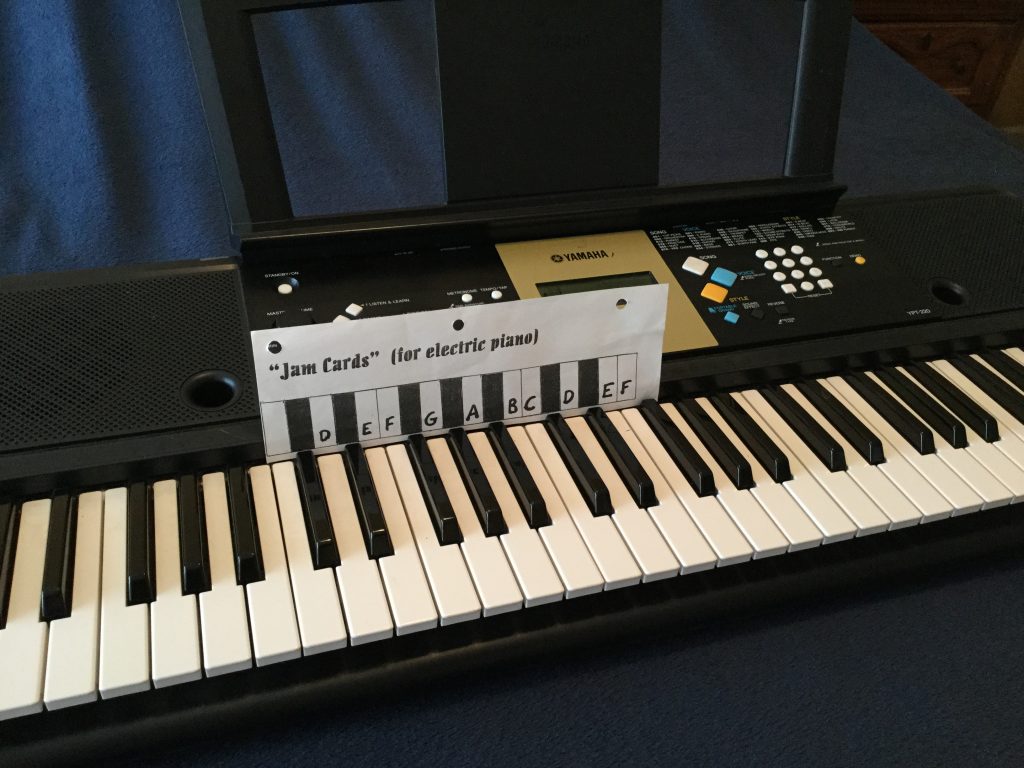
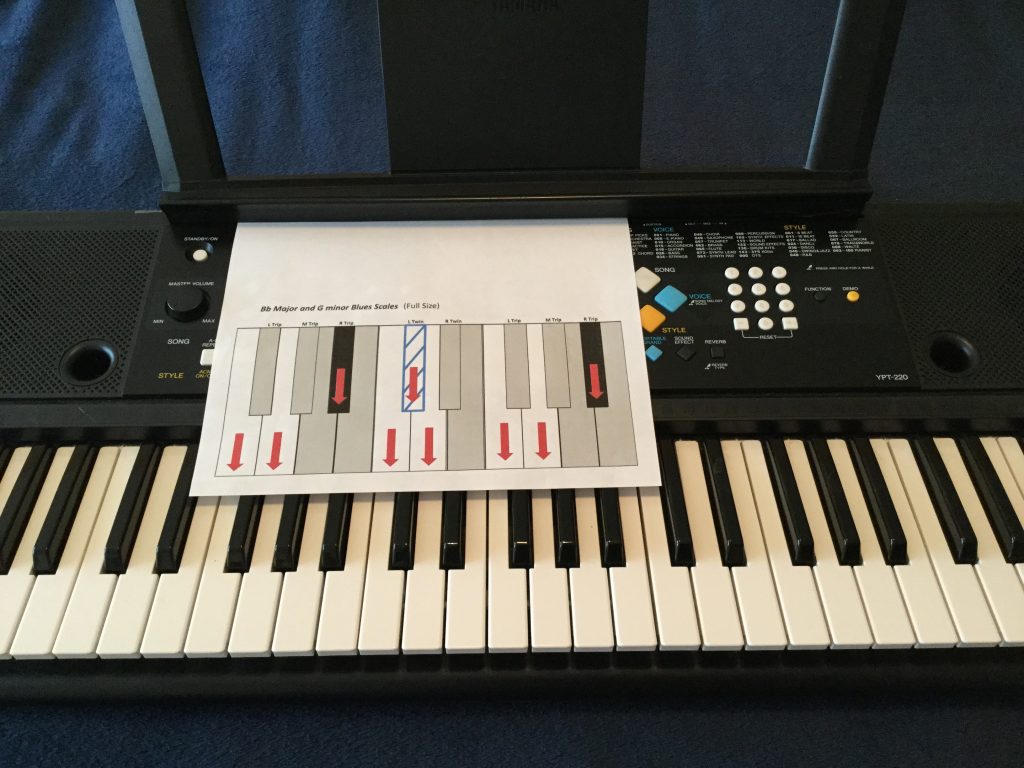
Color Coded Blues Scale Jam Card
Full Size Blues Scale Map for "Roll Up" Piano
